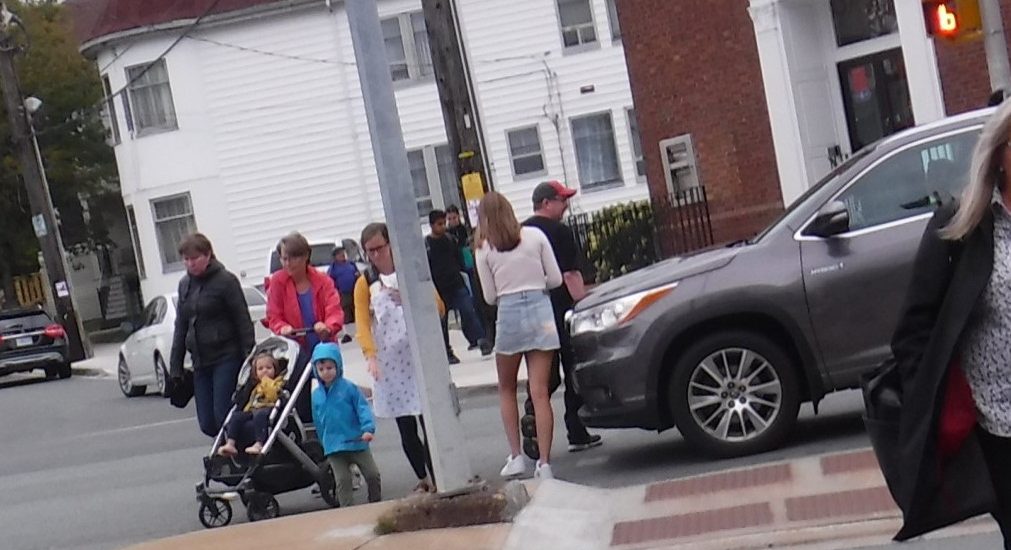
Updated September 22, to add part 2
Updated October 6 to add parts 3 – 6
KJIPUKTUK (Halifax) – When in the winter of 2018 Martyn Williams asked if the Nova Scotia Advocate would be interested in publishing a piece on crosswalk safety, I almost turned him down.
The Nova Scotia Advocate is a news website that focuses on social justice issues, I said. We write about poverty, racism, environmental justice, that kind of thing. I don’t think safe crosswalks are a good fit for us.
Wrong, Martyn Williams replied. Our road/pedestrian policies here have a huge impact on many of these issues you mention. A lack of sidewalks and crosswalks occurs disproportionately in poorer neighborhoods, and affects people who live with disabilities more than others. Poor people, many among them racialized, have no choice but to walk or take the bus. Prioritizing the needs of drivers has an exclusionary effect on the poorest sector of our population.
He was right of course, and 30 articles later Martyn, on behalf of the group HRM Safe Streets for Everyone, is writing a Councillors survival guide to safer streets and traffic, part 1 of which we are happy to publish here on the Nova Scotia Advocate site. It targets mayor and council hopefuls, but it is also useful to residents as it sets out the issues, and what councillors can do to resolve them. It’s a comprehensive guide, and, much like Martyn’s articles, the product of meticulous research.
Every candidate in the upcoming Halifax Council and mayoral election has received a copy. There is more to come, Martyn tells me, with sections in the works on traffic calming, Vision Zero, the Integrated Mobility Plan, construction mitigation, school zones, provincial roads, and so on. We will publish those as well.
There’s also talk of a questionnaire for councillors, so that voters will know where they stand on the issues, but Martyn isn’t sure whether the group can pull that off. It’s a lot of work.
Click here for Part 1 of the Councillors survival guide to safer streets and traffic
Click here for Part 2 of the Councillors survival guide to safer streets and traffic (traffic calming)
Click here for Part 3 of the Councillors survival guide to safer streets and traffic (Vision Zero)
Click here for Part 4 of the Councillors survival guide to safer streets and traffic (The integrated mobility plan)
Click here for Part 5 of the Councillors survival guide to safer streets and traffic (School zones)
Click here for Part 6 of the Councillors survival guide to safer streets and traffic (sidewalks, provincial roads, enforcement and lower speed limits)
If you walk, cycle or use a wheelchair and are affected by road safety issues, please join HRM Safe Streets for Everyone. If your local crosswalk needs a crosswalk flag, please contact the Crosswalk Safety Society. Please remember to report issues affecting your safety to our municipal authorities using the 311 service.
With a special thanks to our generous donors who make publication of the Nova Scotia Advocate possible.
Subscribe to the Nova Scotia Advocate weekly digest and never miss an article again. It’s free!




Have a look at the conditions on the corner of Henry and Coburg. Since Waye Mason essentially privatized the street on which he conveniently lives, traffic has simply moved onto Henry where the crosswalks are inadequately marked and the street itself has been halved by concrete blocks to provide more outdoor cafe space. Given the restrictions of Covid, the cafe is bustling with returning students and the car traffic has increased in numbers and in speed. It is an accident that is waiting to happen. Great move for the restaurant, great move for Waye Mason – not so good for residents and pedestrians!